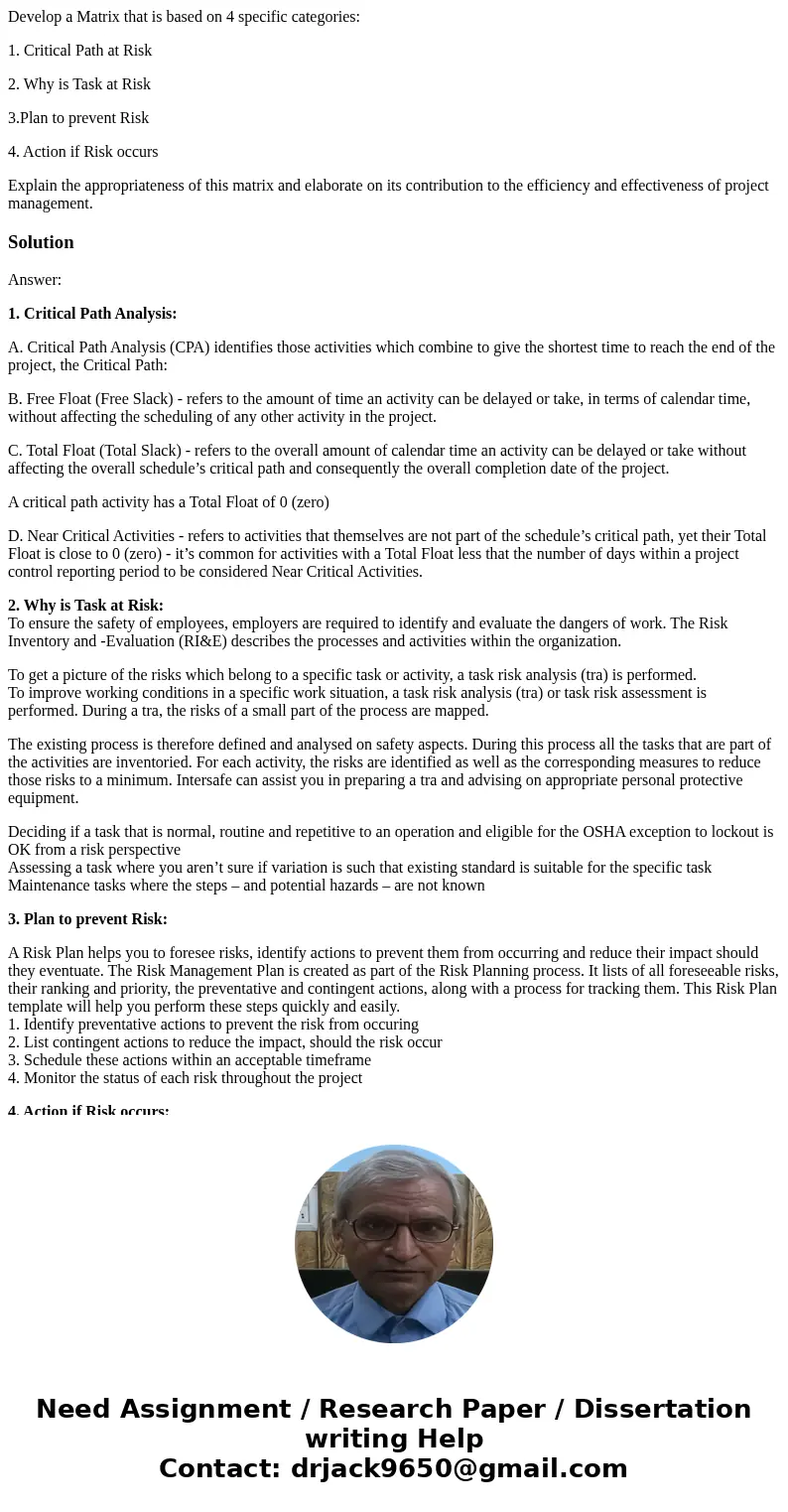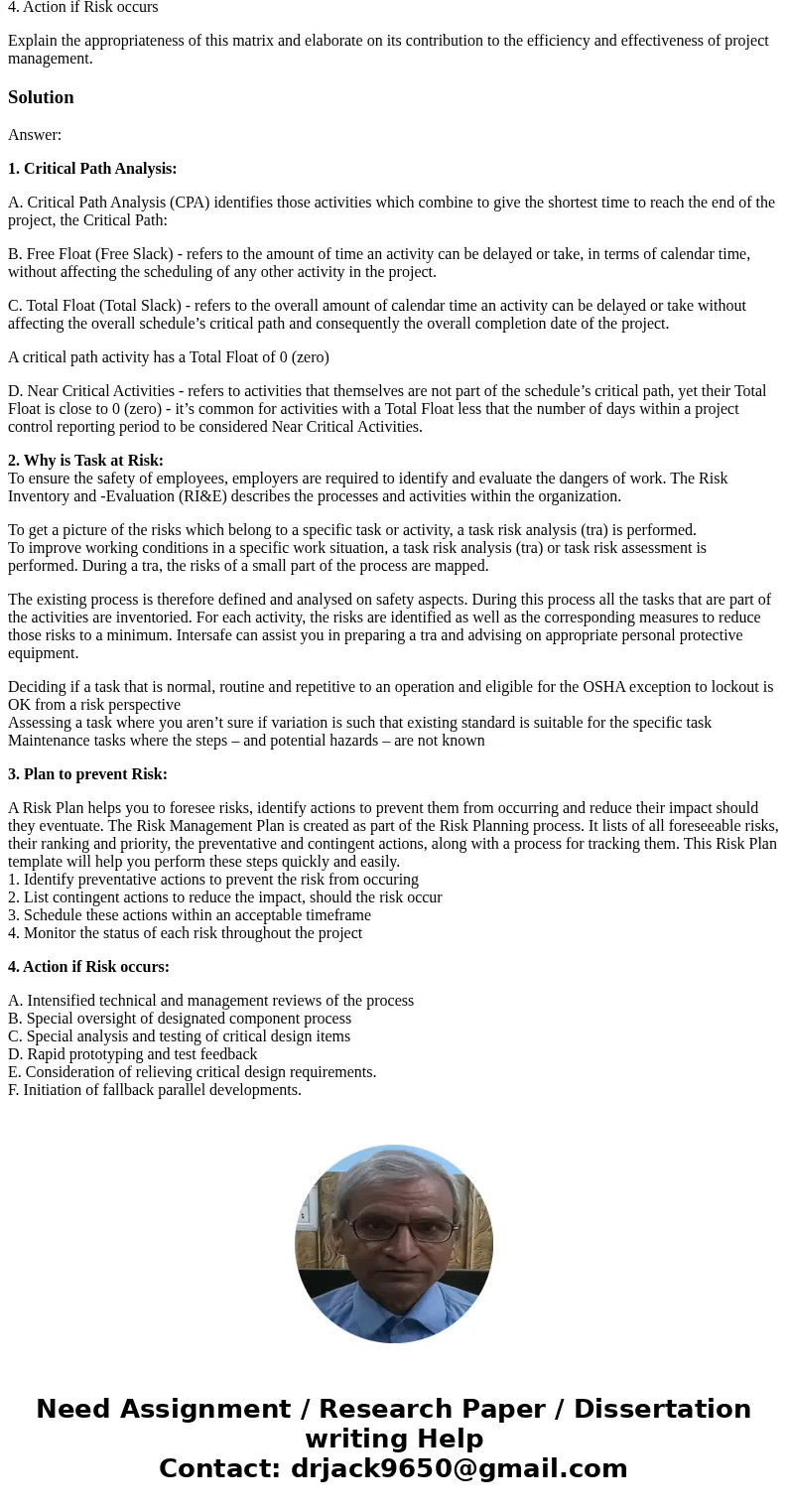Develop a Matrix that is based on 4 specific categories 1 Cr
Develop a Matrix that is based on 4 specific categories:
1. Critical Path at Risk
2. Why is Task at Risk
3.Plan to prevent Risk
4. Action if Risk occurs
Explain the appropriateness of this matrix and elaborate on its contribution to the efficiency and effectiveness of project management.
Solution
Answer:
1. Critical Path Analysis:
A. Critical Path Analysis (CPA) identifies those activities which combine to give the shortest time to reach the end of the project, the Critical Path:
B. Free Float (Free Slack) - refers to the amount of time an activity can be delayed or take, in terms of calendar time, without affecting the scheduling of any other activity in the project.
C. Total Float (Total Slack) - refers to the overall amount of calendar time an activity can be delayed or take without affecting the overall schedule’s critical path and consequently the overall completion date of the project.
A critical path activity has a Total Float of 0 (zero)
D. Near Critical Activities - refers to activities that themselves are not part of the schedule’s critical path, yet their Total Float is close to 0 (zero) - it’s common for activities with a Total Float less that the number of days within a project control reporting period to be considered Near Critical Activities.
2. Why is Task at Risk:
To ensure the safety of employees, employers are required to identify and evaluate the dangers of work. The Risk Inventory and -Evaluation (RI&E) describes the processes and activities within the organization.
To get a picture of the risks which belong to a specific task or activity, a task risk analysis (tra) is performed.
To improve working conditions in a specific work situation, a task risk analysis (tra) or task risk assessment is performed. During a tra, the risks of a small part of the process are mapped.
The existing process is therefore defined and analysed on safety aspects. During this process all the tasks that are part of the activities are inventoried. For each activity, the risks are identified as well as the corresponding measures to reduce those risks to a minimum. Intersafe can assist you in preparing a tra and advising on appropriate personal protective equipment.
Deciding if a task that is normal, routine and repetitive to an operation and eligible for the OSHA exception to lockout is OK from a risk perspective
Assessing a task where you aren’t sure if variation is such that existing standard is suitable for the specific task
Maintenance tasks where the steps – and potential hazards – are not known
3. Plan to prevent Risk:
A Risk Plan helps you to foresee risks, identify actions to prevent them from occurring and reduce their impact should they eventuate. The Risk Management Plan is created as part of the Risk Planning process. It lists of all foreseeable risks, their ranking and priority, the preventative and contingent actions, along with a process for tracking them. This Risk Plan template will help you perform these steps quickly and easily.
1. Identify preventative actions to prevent the risk from occuring
2. List contingent actions to reduce the impact, should the risk occur
3. Schedule these actions within an acceptable timeframe
4. Monitor the status of each risk throughout the project
4. Action if Risk occurs:
A. Intensified technical and management reviews of the process
B. Special oversight of designated component process
C. Special analysis and testing of critical design items
D. Rapid prototyping and test feedback
E. Consideration of relieving critical design requirements.
F. Initiation of fallback parallel developments.


 Homework Sourse
Homework Sourse